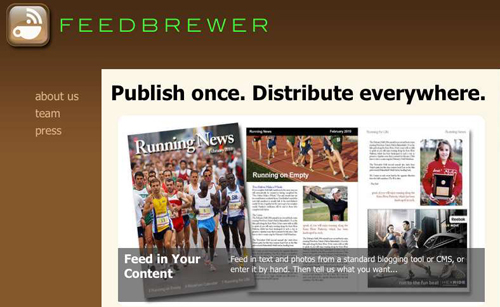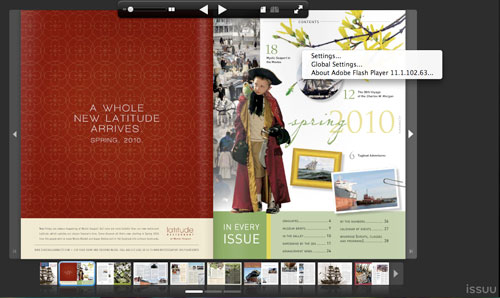The post 8 tools to help you fundraise for a cause appeared first on Socialbrite.
]]>
Photo by Victor1558 on Flickr (Creative Commons)
YouCaring, GoFundMe, other sites help individuals raise money for personal causes & nonprofits
Target audience: Nonprofits, NGOs, cause organizations, social enterprises, businesses, bloggers, social media managers, individuals.
By Lindsay Oberst
Socialbrite staff

After Superstorm Sandy hit in October 2012, individuals created campaigns and inspired people to donate money using online fundraising tools (including the ones mentioned in this article). These people raised millions of dollars and made many people’s lives a little bit easier.
This type of crowdfunding may not be new, but in increasing numbers, people around the world are creating all kinds of campaigns — for creative projects, technology, nonprofits and much more.
Individual fundraising, which we’ll examine in this article, means money raised from individuals. Two types exist:
- Individuals raising money for nonprofits
- Individuals raising money for a personal cause
If you work with a nonprofit, you might also want to check out our top five social fundraising tools, which help organizations raise more money by making the process social. The following tools all have social sharing capabilities as well.
Websites for fundraising as an individual
You want to raise money — say, medical expenses for a loved one, tuition costs for someone around the globe — but chances are you’re not sure how to go about doing it.
While you could use PayPal to raise money by integrating it into a website or through email — and many of the following sites rely on PayPal for donations — these eight tools will give you a more attractive and more engaging platform; one that has a better chance of raising the money and awareness you need.
YouCaring (for personal causes)
1YouCaring is a free fundraising website created specifically for individuals wanting to raise funds for personal causes. More than 16,000 fundraisers have been held to date. Most tools charge some type of fee, but not this one. The site is supported entirely by donors.
How do they achieve this? When people donate to a fundraiser, they have an option to donate a percentage of their total to YouCaring. The only money taken out (about 2.9 percent of the total plus 30 cents) will be from credit card processors PayPal and WePay (expected to be available this month). Money is sent instantly (in most cases) to the fundraiser’s account as soon as it’s donated, so you won’t have to wait until the end of the campaign to get your money.
For campaigns, the site has seven categories: medical expenses, memorials and funerals, tuition assistance, adoption fundraising, funding for mission trips, helping a neighbor and more.
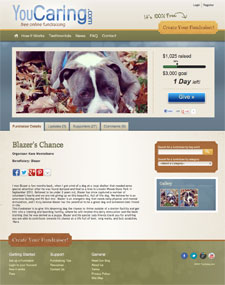 Benefits:
Benefits:
- It’s free.
- You get donations instantly.
- A thank-you message (personalized by you) is automatically sent to your donors.
- Pictures and videos (only from YouTube currently) can be added to pages.
- Good social integration: Facebook, Twitter, Google Plus, Pinterest and email.
- Allows anyone to comment on the page.
- Page creator can make updates.
- Campaigns are promoted to the front page. Also, projects are promoted through Twitter and on their Facebook page.
- Offers fundraising tips and a blog.
- The site is secure: All donations are processed using Secure Socket Layer encryption, or SSL.
Downsides:
- No way to embed a widget on another site.
- Pages have a big YouCaring banner at the top.
GiveForward (for personal causes)
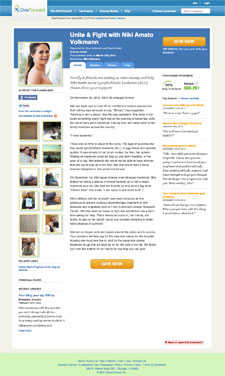 2GiveForward provides online fundraising pages for free. Their website says they are the No. 1 platform for medical fundraisers. Other options for pages include pet medical and funeral/memorial.
2GiveForward provides online fundraising pages for free. Their website says they are the No. 1 platform for medical fundraisers. Other options for pages include pet medical and funeral/memorial.
Desiree Vargas Wrigley and Ethan Austin created the site in early 2008 to allow anyone to raise money for anything. They have had more than 25,000 individual fundraisers published on their site and have helped people raise more than $27 million.
A fundraising page is free to create, and at the end of the fundraiser, GiveForward deducts 7 percent for processing fees. However, donors now have the option to cover the processing fee for their individual contribution. Also, PayPal deducts 2.9 percent of the total plus 30 cents. Creators get the money when the fundraiser reaches its end date, and the maximum time for fundraisers is four months.
Benefits:
- Users get their own personal fundraising coach, who will helps users reach their goals and answers any questions they may have.
- Photos and videos can be added to pages.
- Anyone can grab a widget to help promote the fundraiser.
- Anyone can send “hugs” or comments.
- Anyone can get updates on the project using RSS.
- You get your money, even if the goal is not reached.
- The site offers fundraising tips on its blog.
- The site is secure: They use 128-bit SSL encryption.
- You can make your page private if you wish, meaning that it won’t show up in Google.
Downsides:
- The fundraising goal and amount raised is generally small.
- The overall design of the page is a little cluttered.
- Social integration is adequate: Only Facebook and Twitter are included on the pages.
GoFundMe (for personal causes and for charity)
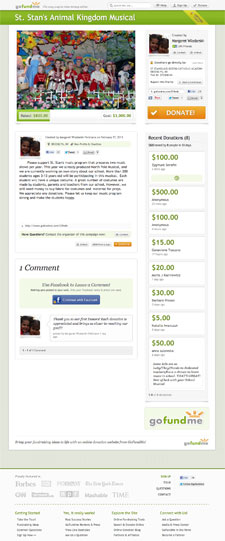 3GoFundMe is an online fundraising service that allows regular people to create personal donation websites and to raise money for charity. Some nonprofits also use the site. (Note: If you work for a nonprofit, it might be a good idea to get listed in the GoFundMe charity directory by contacting the site.)
3GoFundMe is an online fundraising service that allows regular people to create personal donation websites and to raise money for charity. Some nonprofits also use the site. (Note: If you work for a nonprofit, it might be a good idea to get listed in the GoFundMe charity directory by contacting the site.)
Its website says it’s the most popular website for personal causes, and that it grew more than 500 percent from 2011 to 2012 (it launched in 2010). FastCo.Exist says its the third most successful crowdfunding platform after Kickstarter and Indiegogo.
Users can select one of three types of campaigns:
- Personal donation campaigns. These type of projects receive money immediately after it’s donated, and there are no time limits or collection requirements.
- Charity fundraising campaigns. Money raised for charity is sent to the selected charity on a monthly basis. All donations are sent via check.
- All or nothing campaigns. Supporters are only charged if you reach your funding goal.
Creating a page is free, but GoFundMe deducts a 5 percent fee from each donation you receive. Also, the site partners with FirstGiving, which deducts a 4.25 percent fee to process and deliver all donation payments to charities. Or for individuals, a 2.9 percent plus 30 cent fee per transaction is deducted by WePay or PayPal.
Benefits:
- Users can choose different colors for pages.
- The fundraising page does have a GoFundMe banner at the top, but it is small.
- The home page shows recent donations, which might encourage others to check out and donate to campaigns.
- The site promotes campaigns on its blog and social media.
- Offers a customizable widget and badge that anyone can embed on a website or blog.
- Good social integration: Facebook, Twitter, Pinterest, Reddit and email.
- Creator can post updates, and each update has a donate button on the bottom of it.
- Each page has a printable sign, which anyone can use to help raise awareness and money.
- GoFundMe tries to answer all emails within five minutes.
- To protect donors and prevent misuse, a member of the GoFundMe team checks that the campaign creator has a valid Facebook account connected to their page, the page has a photo or video and the page has raised at least $100 in donations. After this, the page will be listed in the search directory.
- An email is sent to you each time someone donates to the page.
- People can set up recurring, monthly donations.
- The site is secure: They use SSL processing.
Downsides:
- Must have a Facebook account to show up in the site’s search.
- People must use Facebook to make comments on the page.
- Most of the messages explaining what the campaign is about get shortened, and people must click the more button to keep reading.
Fundraise.com (for personal causes and for charities)
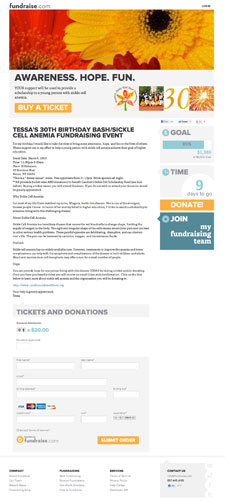 4Fundraise.com is a social fundraising platform founded in 2011 for raising money for personal causes or for raising funds for nonprofits or other organizations. The site also offers pages and support for events, including ticket sales, donations and Salesforce integration.
4Fundraise.com is a social fundraising platform founded in 2011 for raising money for personal causes or for raising funds for nonprofits or other organizations. The site also offers pages and support for events, including ticket sales, donations and Salesforce integration.
Users can choose to receive their donations on a monthly basis or in one lump sum at the end of the campaign. Money is sent by check or by electronic fund transfer to the user’s bank account. A page is free to create, but a 4.5 percent fee plus credit-card processing costs are charged to each donation.
Benefits:
- Good, clean design of the campaign pages, with large, horizontal images.
- Photos and videos can be added to pages.
- The tour of the pages’ features is helpful and well designed.
- The pages do have a Fundraise.com banner at the top, but it is very small.
- Multiple donate buttons.
- Good social integration: Facebook, Twitter and Google Plus.
- Users get a dashboard with analytics to see how their campaign is doing.
- Offers an email center, allowing users to send thank-you messages and reach out to hundreds of donors at the same time.
- Offers users a one-line code to embed the donate form on a website.
- The site promotes some campaigns on its blog. They also feature campaigns on their homepage and show recent fundraising activity on the homepage, too.
- Pages are mobile-optimized, and users have access to a free iPhone app.
- Donors can choose from $25, $50, $100 or another amount.
- Allows people to make recurring donations.
- The site is secure: They use 128-bit SSL encryption.
Downsides:
- Pages don’t have a place for campaign updates.
- People can’t comment on the pages.
- People can only donate with a credit card or debit card, not using PayPal.
Razoo (for charity)
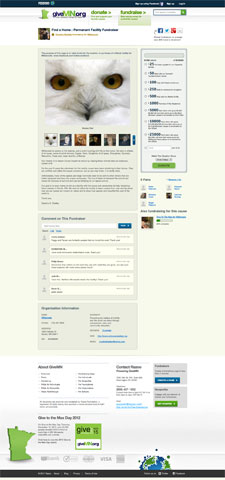 5Many nonprofits use Razoo to raise money, but individuals can also create fundraising pages to raise money for nonprofits. Nearly one million officially vetted nonprofits are registered on the site. More than 300,000 people have used the site to support their favorite causes.
5Many nonprofits use Razoo to raise money, but individuals can also create fundraising pages to raise money for nonprofits. Nearly one million officially vetted nonprofits are registered on the site. More than 300,000 people have used the site to support their favorite causes.
Pages are free to create, but the Razoo Foundation, a nonprofit itself, deducts 2.9 percent, or 4.9 percent after April 1, 2013. Funds are given to the nonprofits once a month.
Benefits:
- Photos and videos can be added to pages.
- Recurring and anonymous donations available.
- Good social integration: Facebook, Twitter, Google Plus and email.
- Small Razoo banner on the top of all pages.
- A free iPhone app is available.
- A Facebook widget allows you to embed the fundraiser on a Facebook page.
- Has an embed code for putting a widget on your blog or website.
- The homepage features campaigns and shows recent donations.
- Anyone can leave comments on a page.
- Pages are mobile optimized.
- All donations are tax deductible, and donors instantly receive a tax-deductible receipt.
- The site is secure: They use SSL encryption.
Downsides:
- Online donations must be at least $10.
- Can only donate with a credit or debit card, not using PayPal.
- The goal and amount raised on the pages are small.
FirstGiving (for charity)
 6FirstGiving allows nonprofits and individuals to create fundraising pages. The website has been around for 10 years, and more than 8,000 nonprofits have used it to raise more than $1 billion.
6FirstGiving allows nonprofits and individuals to create fundraising pages. The website has been around for 10 years, and more than 8,000 nonprofits have used it to raise more than $1 billion.
Pages are free to create, but FirstGiving deducts 7.5 percent service fee from all online donations. Also, donors have the option to pay this fee so that all money reaches the nonprofit.
Benefits:
- Photos and videos can be added to pages.
- An embeddable widget is available to put on a website or blog.
- Good social integration: Facebook, Twitter, LinkedIn and email.
- Offers fundraising tips and a blog.
- A few causes are featured on the homepage.
- Site is secure: They have 256-bit SSL security.
Downsides:
- Design is a little cluttered and not as good as some of the other tools.
- Only donors can make comments on pages.
- Can only donate with a credit or debit card, not using PayPal.
- No recurring donations.
Crowdrise (for charity)
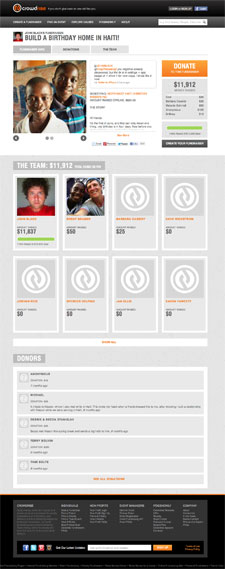 7Crowdrise provides online fundraising websites for individuals, nonprofits and event fundraising. People can create fundraising pages for their favorite causes.
7Crowdrise provides online fundraising websites for individuals, nonprofits and event fundraising. People can create fundraising pages for their favorite causes.
Charities choose from among three plans:
- Basic. With this free plan, Crowdrise deducts a 5 percent fee plus a $1 fee on donations under $25 and a $2.50 fee on donations above $25.
- Featured. This plan costs $49 a month or $490 a year, and Crowdrise deducts a 4.95 percent fee plus $1 per donation.
- Royale. This plan costs $199 a month or $1,990 a year, and Crowdrise deducts a 4.95 percent fee and no transaction fee per donation. This plan also get custom, branded pages.
To get their money, charities can choose to receive a lump sum check every 30 days or they can receive each donation in real-time.
Benefits:
- Photos and videos can be added to pages.
- Good social integration: Facebook, Twitter, Pinterest and email.
- Visible “Donate” button and amount raised.
- Pages do have a Crowdrise banner at the top, but it’s small.
- Donations are tax deductible, and donors automatically receive email receipts.
- Users get Crowdrise Impact Points for raising money, donating to causes and getting votes.
- The site is secure: They use SSL processing.
Downsides:
- Online donations must be at least $10.
- No recurring donations.
- Only donors can make comments on pages.
- Crowdrise doesn’t promote causes very much.
IndieGoGo (for personal causes)
 8IndieGoGo allows individuals and nonprofits to create fundraising pages. The site started out for creative projects only, but now it has expanded to causes and entrepreneurial projects as well. (Its chief competitor, Kickstarter, is still strictly for projects, not charitable causes.)
8IndieGoGo allows individuals and nonprofits to create fundraising pages. The site started out for creative projects only, but now it has expanded to causes and entrepreneurial projects as well. (Its chief competitor, Kickstarter, is still strictly for projects, not charitable causes.)
IndieGoGo charges a 9 percent fee on all funds raised, but if you reach your goal, you get 5 percent back. Also, nonprofits get a 25 percent reduction on platform fees. Campaign creators can keep all the money they raise, even if the goal is not reached. Or they can opt to keep the money only if the goal is reached. Creators who choose the first option will also have to pay a 3 percent credit-card processing fee, plus a $25 fee for non-US campaigns.
Benefits:
- Photos and videos can be added to pages.
- Each page has a shortened, shareable link.
- Can provide donors with perks for donating certain amounts.
- Good social integration: Facebook, Twitter, Google Plus and email.
- Creators can provide updates on projects.
- Creators have a dashboard with analytics.
- Anyone can get an embed code to add a widget to a website, blog or email.
- Offer a blog with tips and other info.
- They say they respond to all emails in 24 hours or less.
- Donations can be accepted through PayPal or by credit or debit card.
- Indiegogo helps spread the word about campaigns through an algorithm they call the gogofactor. Sharing, tweeting and getting people to “like” your campaign will boost your campaign’s visibility.
Downsides:
- All pages have pink and green (IndieGoGo’s colors) on them.
- Pages must offer perks to donors.
A few fundraising tips
- Be specific. Tell people why they should contribute to your campaign. Introduce yourself and describe your project and why it’s important to you. On its website, Indiegogo advises people to, “Keep it concise, yet personal.”
- Create urgency. According to the GiveForward website, they’ve seen that the most successful fundraisers typically last four to six weeks, as people are more inclined to donate when there is a shorter time frame and a higher sense of urgency.
- Do something unique. You should have a little fun so that people want to reach out and give money to your campaign. The Crowdrise website suggest coloring your hair blue when you raise $500.
- Tell your friends and family. According to the GoFundMe website, personal campaign donations come mostly from friends and family, not strangers.
- Share and use social media. According to the Razoo website, shared fundraisers raise $18 more in donations, on average.
- Be persistent. “The biggest difference I have seen between successful fundraisers and non-successful is persistence,” Luke Miner of YouCaring told me. “Most people give up in the first few days of fundraising, instead of continuing forward with the promoting, and lose hope.”
What did we miss? Which individual fundraising tools have you used? Add your experience, feedback and suggestions in the comments section!
Related
- 24 tools for fundraising with social media (Socialbrite)
- Behind the success of 10 top Causes (Socialbrite)
- top five social fundraising tools (Socialbrite)
- 10 mobile apps for social good (Socialbrite)
- A directory of top cause organizations (Socialbrite)
 This work is licensed under a Creative Commons Attribution-NonCommercial 3.0 Unported.
This work is licensed under a Creative Commons Attribution-NonCommercial 3.0 Unported.
The post 8 tools to help you fundraise for a cause appeared first on Socialbrite.
]]>The post 11 free & inexpensive online photo editing tools appeared first on Socialbrite.
]]> Photo courtesy of Fensterbme via Creative Commons
Photo courtesy of Fensterbme via Creative Commons
Photoshop Express, Pixlr, FotoFlexer allow editing on a budget
Target audience: Nonprofits, NGOs, cause organizations, social enterprises, businesses, Web publishers, bloggers, social media managers, individuals.
By Lindsay Oberst
Socialbrite staff

Good photos are powerful. A good image captures interest, creates connection and provokes a reaction, which can then inspire action. All organizations need quality images that inspire people to act — to share, to like, to comment, to give.
Newsletters, websites and Facebook pages with photos that could be improved — maybe cropped tighter or made brighter — can be that much more powerful. Plus, if your nonprofit wants to impress on Pinterest or Tumblr, knowing how to enhance images and add words and other elements to your images is essential.
So how do you edit photos when you’re not a designer and don’t have access to pricey programs like Adobe Photoshop or Aperture from Apple, and when you only occasionally need to edit images online?
You’ll be happy to know that while Web-based photo-editing tools were once limited, now many websites provide basic editing options such as cropping and resizing. Some even offer advanced editing options such as layers. Plus, most of these tools are free and easy to use.
Photo basics and editing tips
Before we get to the photo editing tools, let’s touch on some basic things you need to know to change your images into wow-worthy creations.
- Image resolution describes the detail an image holds and refers to the number of dots, or pixels, in a linear inch of the image, measured in dots per inch (dpi) or pixels per inch (ppi).
- Most Internet images are 72 or 96 dpi (mostly depending on whether you’re a Mac or PC). However, dpi doesn’t apply to the Web (contrary to what most people say). Don’t worry about dpi or ppi for Internet images — image resolution has nothing to do with how an image appears on a screen — but you do need to be concerned with the pixel dimensions of your image. For example, on Facebook, the largest possible image size is 720 x 720 pixels.
- Print images should be at least 200 or 300 dpi.
- File size measures the size of a computer file, in kilobytes (KB) or megabytes (MB). Web photos should generally be no larger than 100KB. Saving photos as JPGs is preferred for digital images because it compresses while also maintaining picture quality.
- When editing online photos, the Chrome, Safari and Firefox extension Measureit! is useful for measuring the pixel width and height of any elements on a Web page.
11 good online photo-editing tools
These are the best tools that we’ve found for editing images online. Know of others? Please add them in the comments below!

Photoshop Express
1Photoshop Express is good for simple edits. To use this Flash-based service (not to be confused with Photoshop Elements), sign up for a free account or test drive the service first. Then you can upload a photo (must be a JPG) from your computer.
The layout is simple and grey, and you can edit fullscreen. Basic edits (crop, rotate, resize, auto correct, exposure, red eye, touch-up, saturation), advanced edits (white balance, highlight, dodge, burn, sharpen, soft focus), effects (crystallize, pixelate, hue, tint and others) and graphics (text, bubbles, frames and others) are available. Sharing to Facebook, Picasa, Flickr and others is easy.
Photoshop Express apps exist for Android and Apple, too. Free.
Good for:
- Basic editing
- Beginners
Positives:
- Allows you to view the original as you edit
Downsides:
- Small font selection for adding text
- Requires you to sign up and provide your birthday
Pixlr
2Pixlr is a more advanced, Flash-based editor, which offers most of the basic Photoshop functionality at no cost. You can even layer images on top of one another or use other effects to transform your photos. To use this tool, choose the express version or the advanced one. Both have fullscreen options.
The basic editing tool, Pixlr Express, is simple and easy to use, with big buttons that allow you to make changes with one click. Make adjustments (crop, resize, auto fix, color splash, vibrance, white teeth, touch-up, airbrush and others), add effects (only a few), overlays (space, smoke, vignette and others), borders, stickers and text (only seven font options).
The advanced editor, Pixlr Editor, is quite similar to Photoshop in layout, with areas including navigation, layers and history. Make adjustments (hue, levels, curves, exposure and others), add filters (sharpen, noise, halftone, tilt shift, blur and others) and create layers. A wand tool and a lasso tool are included, as well as a clone stamp tool, red eye reduction and others. Can save in a variety of formats: JPG, PNG, BMB, TIFF and PXD.
Pixlr also offers apps for Android and Apple. Free.
Good for:
- Basic to advanced editing
- People looking for cheaper programs similar to Photoshop
- Creating collages (with Pixlr Express)
- Touching up and correcting imperfections in photos of people
Positives:
- Keeps high-res photos the same quality after editing
- Tutorials are available if you’d like to learn more about using Pixlr
- No log-in required to use
- The Pixlr Grabber for Firefox and Chrome allows you to choose online pictures or screenshots for editing using Pixlr Editor
Downsides:
- Pixlr Editor requires editing knowledge or time to learn how to use it
- Pixlr Express doesn’t have the ability to share to social networks after editing your image (the advanced editor does, though)
Pixlr-o-matic
3Pixlr-o-matic is made by the same company as Pixlr and allows you to add filters (a la Instagram), overlays and borders. Images are saved as JPG. This Flash-based service is also has apps for Android and Apple and an Facebook app. And it can be installed as a Chrome Web app. Free.
Good for:
- Adding filters, like retro and vintage
- Adding creative borders
Positives:
- Easy to use, although the buttons are not named
Downsides:
- Doesn’t have a fullscreen option
- Doesn’t offer simple editing, like cropping and resizing
- Can only save to your computer
Splashup
4Splashup is an advanced Flash-based editor that allows you to open an image from your computer, Facebook, Flickr and others. Its layout is similar to Photoshop, with layers and filters (but not as many options as Pixlr). The interface is grey, with moveable boxes. Free.
Good for:
- Basic to advanced editing
- People looking for cheaper programs similar to Photoshop
- Multiple saving options: save as a JPG or PNG and choose photo quality. Also shows you photo size.
Positives:
- Allows you to edit multiple photos at once
- Can edit a webcam image
Downsides:
- Navigation is not as easy as other tools
- Opens a new window for editing

FotoFlexer
5FotoFlexer is an editor with basic and advanced options. It can edit fullscreen. Offers basic edits (auto fix, fix red eye, resize, flip and others), effects, decorations (text, draw and others), animations, beautify (fix blemishes, smooth wrinkles) and layers, with a layout that is easy to use, yet different than layers in Photoshop. Edit photos from Facebook, Picasa, your computer and other places, and share to a variety of social-networking sites and email when you’re done. Saves images as JPG or PNG. Free.
Good for:
- Basic to advanced image editing
- Creating collages
- Touching up and correcting imperfections in photos of people
Positives:
- Can upload any size photo
- Has a low-bandwidth interface
- Has a white background (most other tools have boring grey ones)
- Has a large selection of font options
Downsides:
- Takes a minute to save the photo
- Not as easy to use as other tools
Ribbet
6Ribbet is a Flash-based editor built on the same platform as Picnik, which used to be a top online editing tool before it shut down. Most of the options are free, with some only available in Ribbet Premium. Currently, the premium version is free, but it will cost money in the future. Once you upload an image, the layout of interface is very simple and clean, with rounded buttons and colorful pictures.
Allows for basic edits (crop, rotate, exposure and others), a large variety of effects, touchups (blemish fix, airbrush, sunless tan, mascara, lip color, cloning and others) and creative frames. Can edit images from websites using a Chrome bookmarklet. And saving to your computer, Flickr and Facebook is possible. Save images as PNG or JPG.
Good for:
- Touching up and correcting imperfections in photos of people
- Creating collages
Positives:
- Has a more-pleasing layout with a white background
- Has a large number of fonts for adding text to images
Downsides:
- May charge money for certain features in the future.
PicMonkey
7PicMonkey is a well-designed image editor, with beautiful graphics and a clean layout. Some former Picnik engineers decided to create this tool, which is Flash based and offers basic edits (rotate, crop, sharpen, resize), effects (some good ones like the HDR one), touch-ups (blemish fix, teeth whiten, lip tint and other ones in the paid edition), text (with many font options), overlays, frames and textures. Many features are free, but for $4.99 a month, users get ad-free editing, 40 percent more effects, double the touch-up tools and more.
Good for:
- Basic to advanced editing
- Touching up and correcting imperfections in photos of people
- Creating collages and cards
Positives:
- Beautiful layout
- Simple to use
- Can easily share to social-networking sites, including Pinterest, or save as JPG or PNG
Downsides:
- Advanced features and extra effects cost money
- Free version has ads
LunaPic
8LunaPic is an editing tool with a variety of animations, which could be good for Tumblr images. You can also easily share to social-networking sites, including Tumblr. Free.
Good for:
- Basic to advanced editing
- Creating slideshows
- Creating collages
- Making images with animations
Positives:
- Has some unique editing features, including reflecting animation and the ability to create a Twitter image mosaic
- You can see each image in your undo history
- Offers some tutorials within the editing interface
- Can save to many formats: GIF, JPG, PNG, PDF, AVI and others
- Doesn’t rely on Flash
Downsides:
- Layout is distracting and not easy to use
- Lacks cancel buttons
iPiccy
9iPiccy is an online editor that offers basic and advanced edits, with the added ability to upload photos to a photo basket. Offers fullscreen editing, along with basic edits, many effects (pop art, HDR and others), touch-ups (blemish fixer, shine remover, wrinkle remover, hair color, clone tool and others), layers, paint tools, frames and textures. Can save as JPG or PNG. Free.
Good for:
- Basic to advanced editing
- Creating collages
- Adding watermarks to your images (using saved photos in your photo basket)
- Touching up and correcting imperfections in photos of people
Positives:
- Layout is simple with colorful buttons
Downsides:
- You have to give iPiccy permission to store files on your hard drive
Sumopaint
10Sumopaint is an online editor with a layout and menus similar to Photoshop. It has a free version with basic editing tools, a $9 version with 35+ more filters and tools and a $19 version with the 35 extra features, along with a desktop app for offline use. This Flash-based tool has a gray interface and layers. You can crop, rotate, use a magic wand or a lasso and many other tools. An iPad app is also available.
Sumopaint also has a strong community of users at Sumo.fm, which allows users to share images and interact with one another.
Good for:
- People looking for cheaper programs similar to Photoshop
- Basic to advanced editing
Positives:
- Can save as JPG or PNG
Downsides:
- Only allows you to open file from computer or a URL
- Doesn’t have any photo-sharing capabilities
- Doesn’t have font preview when adding text
- Doesn’t allow for full-screen editing
Citrify
11Citrify is a basic editing program that allows you to adjust (brightness, contrast, hue, saturation, resize, rotate, sharpen), touch up (airbrush, blemish, glare, red eye, toothbrush, wrinkle) and add a limited amount of effects and stickers. Saves images as PNG. Free.
Good for:
- Basic editing
- Beginners
- Touching up and correcting imperfections in photos of people
Positives:
- Easy to use
Downsides:
- Editor opens in a new window
- Can only open a photo from your computer
- Can only resize photos smaller or bigger, not a specific size
- No sharing features
What other online photo editing tools do you use for your nonprofit?
Related
• 7 image editing tools to create top-rate visual content
• Top 10 sites for free or low-cost photos
 This work is licensed under a Creative Commons Attribution-NonCommercial 3.0 Unported.
This work is licensed under a Creative Commons Attribution-NonCommercial 3.0 Unported.
The post 11 free & inexpensive online photo editing tools appeared first on Socialbrite.
]]>Now that you’re sold on the idea, or are at least considering it, how do you make it happen?
The post On-demand magazine publishing, simple & cheap appeared first on Socialbrite.
]]>
A one-off magazine produced by the American Red Cross International showcasing earthquake relief efforts in Haiti.
DIY publishing for your nonprofit: How to make it happen
This is the second of a two-part series. Also see:
• Part 1: 6 business reasons for nonprofits to publish a magazine
Target audience: Nonprofits, cause organizations, foundations, NGOs, social enterprises, educators, Web publishers.
By Lindsay Oberst
Socialbrite staff
 Yesterday we invited you to think about whether a print magazine might make sense for your nonprofit or social enterprise — and we use a broad definition of magazines here to include a print newsletter, whitepaper, special report, annual report, event keepsake or a catalog of fundraising merchandise and so on.
Yesterday we invited you to think about whether a print magazine might make sense for your nonprofit or social enterprise — and we use a broad definition of magazines here to include a print newsletter, whitepaper, special report, annual report, event keepsake or a catalog of fundraising merchandise and so on.
Now that you’re sold on the idea, or are at least considering it, how do you make it happen?
The first thing you need to consider is how much time, money and effort you have available to take on the project. Do you already have people who can write, design, produce and perform other required tasks? Or do you want to offload some of the work to a contractor or publishing firm?

In the past, only large organizations with large audiences and budgets could produce a quality publication. But print-on-demand technology gives organizations of any size the ability to produce print publications in whatever numbers they need in a cost-effective way. Whether it’s a regular magazine, a one-time publication or any other printed product, the possibilities are only beginning to be explored in the social good sector.
To get the work done, you’ll likely want to consider on-demand technologies using a combination of staffers, freelancers or agencies (yep, like Socialbrite). And that’s what we’ll cover for the bulk of this article.
Another way to go is to find a custom publishing company to take care of everything for you, for a price. Custom publishing companies handle everything — even billing, if your magazine charges a subscription. A good place to look for these companies is the website of the Custom Content Council, a group of companies offering publishing services to commercial and nonprofit organizations. You can also do an online search for custom publishing companies and compare offerings. Many companies offer nonprofit discounts, such as Dazzle Printing, which offers a 10 percent discount and free proofreading to all nonprofits.
Choosing to self publish: The DIY option
Self publishing allows anyone to have a magazine without an established third-party publisher. (And by the way, there may be occasions when you want to self-publish a short book.) It’s become easy to publish a magazine using vendors, including MagCloud, FeedBrewer, Issuu, Calameo, Mstand and Scribd. Let’s summarize what they have to offer.
MagCloud
MagCloud handles the printing, distribution and shipping of your content. They enable you to publish a beautiful magazine-format publication in print or as a digital version. For print, they can produce runs as small as one and as large as 3,000.
What’s great about this vendor is that they offer tips and other help on their blog. They also offer publishing templates, which are especially useful guides if you haven’t tried to publish a magazine before. The company, which services customers in the United States, Canada and UK, can also recommend people you can turn to for design and more. Sometimes customers post calls for help on the MagCloud Facebook page, which are answered by the community.
Andrew Bowell, managing director of MagCloud, said he would guess hundreds or thousands of nonprofits have used their services. He believes nonprofit-created, magazine-style newsletters are a great idea for creating community and for raising money.
Bowell said MagCloud is “as simple as YouTube to use,” and underscored its efforts to make the service as user-friendly as possible.
Five of the many nonprofit publications that have used MagCloud:
- The International Federation of Red Cross and Red Crescent Societies (IFRC) reference centre for psychosocial support publishes a quarterly magazine that features stories from National Societies around the world providing psychosocial support to people after disasters, conflicts and other dramatic events. Each issue focuses on one particular area, such as recovery, violence or children affected by war.
- The Lance Armstrong Foundation is another nonprofit using MagCloud to publish Livestrong Quarterly, an online, print and print-on-demand publication.
- An example of an interesting, one-time publication is a photography magazine, which was created as a fundraiser for the American Red Cross International Response Fund for Haiti earthquake relief.
- The Northern California National Speakers Association publishes a 20-page color magazine called Professionally Speaking (last issue: spring 2010). The nonprofit’s president, Ian Griffin — who used to work at HP, the company that runs MagCloud — told me he created the magazine mostly to make the members aware of MagCloud.
- Also, while it is not a magazine, one project created using MagCloud that is worth mentioning is a calendar called Men of the Stacks, which raised more than $20,000 last year to benefit the It Gets Better Project. (Here is another sign that producing a calender could be a good way for nonprofits to raise money.)
Bowell said nonprofits, or any publisher, can raise the price if a project gets successful, such as the Men of the Stacks calender, and 100 percent of the markup goes to the nonprofit. They also offer a discount for nonprofits: Normally it costs 20 cents per page to produce a print product, but nonprofits are charged 15 cents per page.
A 24-page magazine costs a little under $5 per copy to produce with MagCloud, or about 20 cents per page, and shipping costs extra. That’s a price tag that could discourage large print runs, so nonprofits may want to consider finding sponsors/advertisers, offer highly targeted magazines with one-time production runs or offer print as an option to people who want it. MagCloud does, however, publish digital, iPad-optimized issues for free. It’s also good to know that it’s possible to target only your members and/or donors by establishing a password for them, which they can use to download your magazine online.
“Because we focus on magazines, I think people only think of us and magazines, but our services could be used to create endless possibilities,” Bowell said.
FeedBrewer
The multi-platform publishing company FeedBrewer can turn your content into print and digital products. They also offer a variety of technology, design and strategy services. While the company began by producing printed products, they have shifted their focus to content that can be displayed on e-readers, tablets and mobile devices without having to buy expensive software or build a mobile development team.
They are currently promoting their ebook services under the name Book Brewer, which CEO Dan Pacheco told me would be a great way for nonprofits to raise money. He said nonprofits could curate their content into a ebook and use the proceeds as a new way to fund-raise.
Despite the company’s shift, FeedBrewer is still able to print PDFs. The price for their services beyond printing depends on what needs to be done, but they generally charge $95 per hour for development and $50 per hour for project management. Pacheco said they typically offer discounts for larger projects.
The University of Texas at Austin Journalism school uses FeedBrewer to publish their academic journal.
Issuu, Calameo, Mstand, Scribd and Virtual Paper
Issuu allows you to upload PDFs or other documents and flip through them, magazine-style, on a webpage or in an embeddable format. This is a good service to use if you want to present printed content online. The company offers a clean design and ease of use for its customers. Many nonprofits use Issuu to show off their magazines, including the nonprofit museum Mystic Seaport.
You can upload documents for free, or you can opt for the pro version, which provides ad-free, detailed statistics, advanced customization and more.
Calameo is similar to Issuu. It also lets you upload documents for free, and it gives you the option to embed rich-media content to your publications such as videos and audio.
Mstand calls itself a public newsstand that also allows you to present magazines online for free in a flippable, embeddable format. What makes this company different is that they allow you to incorporate social media sites alongside the viewer. The American Immigration Lawyers Association uses this site to display its magazine, Voice.
Scribd is the most popular document sharing site. Most of the uploaded documents are articles and writings rather than full magazines. With this tool, you can also embed content and upload for free — and charge a price for downloads if you’d like.
Virtual Paper (which seems to have a branding problem — it’s at docpit.com and has the browser title Virtual Kiosk) offers services for digital publishing, including mobile and iPad apps, at a cost. With the other three digital viewing options mentioned above, you might wonder why you’d choose a service that isn’t free. Maybe because your project requires more advanced options, including multimedia content, printable coupons, advertising and subscription tools and more. Virtual Paper also offer product managers, technical teams and consultants to their clients. Girl Scouts USA uses them to produce digital and printable catalogs.
If you’re trying to raise awareness through your magazine, you may want to upload your publication to all of the free websites mentioned above. And if you’re looking for more information about publishing a magazine, MagazineLaunch has many articles and listings that may be of help to your organization.
Will you consider publishing a magazine for your nonprofit?
Related
• Self-publishing a book: Tell your story in print (Socialbrite)
• Guide to publishing a successful ebook (Socialbrite)
• Directory of resources on creating media for nonprofits (Socialbrite)
 This work is licensed under a Creative Commons Attribution 3.0 Unported.
This work is licensed under a Creative Commons Attribution 3.0 Unported.
The post On-demand magazine publishing, simple & cheap appeared first on Socialbrite.
]]>The post 6 business reasons for nonprofits to publish a magazine appeared first on Socialbrite.
]]>
Print magazines from the nonprofits Black Women in Sport Foundation and Livestrong.
Consider using print on demand to reach new supporters or constituents
This is the first of a two-part series. Coming Tuesday:
• Part 2: On-demand magazine publishing, simple & cheap
Target audience: Nonprofits, cause organizations, foundations, NGOs, social enterprises, educators, Web publishers.
By Lindsay Oberst
Socialbrite staff
 For all nonprofits, digital should be the top priority for communications and public outreach. But new technologies now give you more options for reaching existing and potential supporters. One of those options may surprise you: a print-on-demand magazine.
For all nonprofits, digital should be the top priority for communications and public outreach. But new technologies now give you more options for reaching existing and potential supporters. One of those options may surprise you: a print-on-demand magazine.
Mid-size and large nonprofits routinely produce monthly or quarterly print magazines as part of their mission. Consider Livestrong Quarterly, which debuted in 2009 and is powered by HP MagCloud technology (more on that tomorrow), as well as such nonprofit stalwarts as Consumer Reports, National Geographic, Smithsonian and AARP Magazine, which boasts the third largest circulation of any magazine in the world. Smaller nonprofits have also joined the fun: There’s Kaleidoscope magazine, published by United Disability Services, Natural Transitions Magazine, published by Natural Transitions, and BWSF Magazine, recently launched by The Black Women in Sport Foundation (download their inaugural issue as a PDF).
Now, we’re not suggesting that you begin publishing a monthly magazine to add to your nonprofit’s plate (although if you do, please let us know!). But let’s get creative for a second. For the first time, you can now print an on-demand, high-quality, full-color magazine to tell your organization’s story, whether it’s tied to a fundraising event, direct mail appeals, an annual report, the opening of a new store (think Goodwill or Salvation Army) — the possibilities are almost limitless. The evidence suggests that most people want to experience both print and digital communications. Give them want they want, and they’ll be more likely to support and follow your cause.
— Kivi Leroux Miller, nonprofit consultant
Kivi Leroux Miller, nonprofit communications consultant and author of The Nonprofit Marketing Guide, believes nonprofits should still use print. “Today it’s all about using the right mix of communications channels to reach the right people,” she told me via email. “I don’t believe in any of this ‘print is dead’ or ‘email is dead’ nonsense. What’s ‘dead’ is thinking you can use just one form of communication and expect your messages to get through.”
According to multiple surveys and market research, the tactile sensation of holding a magazine or any paper product and being able to touch and smell its pages is something most people still value — even digital natives and tech geeks. Different media work in different circumstances. While millions of Americans now read on smartphones and tablets when they’re on the go, many prefer print when reading at home.
Another good thing about printed products is that they provide a much-needed break from the fast-paced onslaught of tweets, emails, ads and IMs. When someone reads your print magazine, they’ll be less likely to get distracted and more likely to absorb your message, update or fundraising appeal — and to take action.
The evidence points to print remaining an important part of the culture for some time: Handmade and printed zines are making a comeback. A new print magazine about social media was named one of the top magazine launches of 2011. Even Hacker Monthly, a curated, best-of-the-Internet print publication, is making a profit. (Check out PrintIsBig for tips on why print still matters, how it is green and why it still drives commerce.)
6 good reasons for nonprofits to publish a magazine
If you’re considering publishing a magazine for your nonprofit or social enterprise, it doesn’t need to be in print form, of course. Current and developing technologies make digital magazines — say, for the iPad — accessible and enjoyable, especially with the increasing numbers of people with tablets. But you’re no longer restricted to one or the other. Publish your magazine online — and in print. Then promote it using social media.
Publishing a magazine isn’t something you want to enter into without a plan that covers such topics as who’ll write the content? Who’ll take the photos? Who’ll design the look? (Often, a combination of staffers and contractors.) And most importantly, who are you trying to reach, why, and how?
Here are six business goals and organizational missions that a magazine can help advance. See if some of these make sense for your organization.
 1To get new members and keep current donors. Having something tangible (and well-produced) could be impressive to people considering whether they want to join or support your organization. People you meet will be more likely to remember your nonprofit with a publication than if you simply give them a business card.
1To get new members and keep current donors. Having something tangible (and well-produced) could be impressive to people considering whether they want to join or support your organization. People you meet will be more likely to remember your nonprofit with a publication than if you simply give them a business card.
2To increase donations. “The majority of individual donor fundraising is still done via print,” Leroux Miller says. Even though many online fundraising tools exist, calls to action in print are still driving people to give money. Recent research shows that online works for attracting donors, but it is not as successful at keeping them. For example, many donors acquired through the Internet are switching to giving through direct mail.
3To build a community around your cause. “Print retains the ability to impress and persuade in a way that some other media do not,” magazine professional Cable Nehaus said. To sustain communities, regular communication is necessary; magazines can provide that and can complement other (read: digital and mobile) strategies.
4To educate your audience. “Magazines could work for very specialized groups, on specialized topics,” Leroux Miller said. “It has to be the kind of thing that isn’t necessarily super-timely (people go online for that), but still provides some real value.” Magazines could be a unique way to inform your audience about specific issues. In the United Kingdom, many NGOs are sending correspondents to do foreign reporting.
5To serve underrepresented readers. Not everyone is online, which can be an odd thing to remember when your life is basically lived online. For some nonprofits, spending all day on Facebook is a mistake. Think about your community.
6To get your readers to take action. This is the most important reason of all — a call to action that’s right on your supporter’s end table. “[Magazines] have a certain existential ‘weight,’ particularly if they are smartly done,” Nehaus said. “The very fact that an [organization] publishes a magazine sometimes can convey the impression that the [organization] is serious about its mission.” If people believe your organization is serious, they will be more likely to take action and help your cause.
A video ode to print
— magazine professional Cable Nehaus
Magazines are highly specialized, which is an important thing to consider when thinking about publishing one. Let’s say you want to go for it. Today, you have two options: traditional publishing with an outside company doing most of the work or self publishing, which allows you to be as involved as you want, depending on your budget and the talent already available to you.
In part 2, we’ll cover how to publish a magazine using one of these methods. But we encourage you to start thinking about ways your nonprofit can continue to use print as part of your communication and marketing plans.
And I’ll leave you (for now) with a short video poem about why print is not dying:
Related
• Self-publishing a book: Tell your story in print (Socialbrite)
• Guide to publishing a successful ebook (Socialbrite)
• A step-by-step guide to creating a media strategy (Socialbrite)
 This work is licensed under a Creative Commons Attribution 3.0 Unported.
This work is licensed under a Creative Commons Attribution 3.0 Unported.
The post 6 business reasons for nonprofits to publish a magazine appeared first on Socialbrite.
]]>The post Facebook’s page for nonprofits offers helpful resources appeared first on Socialbrite.
]]>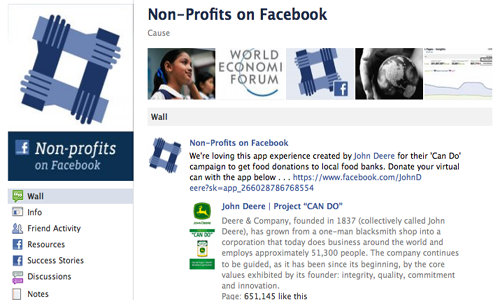
Learn best practices from other nonprofits successfully using Facebook
Target audience: Nonprofits, cause organizations, social enterprises, social media managers, marketing professionals, businesses, brands, Web publishers, individuals.
This is the second part of a two-part series on Facebook apps and resources available to nonprofits. Also see:
• 5 essential Facebook applications for nonprofits
By Lindsay Oberst
Socialbrite staff
 With more than 100,000 nonprofit Facebook pages out there, it’s clear that many nonprofits already know that the social networking site can be a game changer. Since we often spend more hours on Facebook than with our best friends, we might as well also be using this time for good, right?
With more than 100,000 nonprofit Facebook pages out there, it’s clear that many nonprofits already know that the social networking site can be a game changer. Since we often spend more hours on Facebook than with our best friends, we might as well also be using this time for good, right?
If you look around Facebook, many of the existing nonprofit pages don’t come close to reaching their full potential. They were created and then left alone, or are used in ways that don’t work on Facebook. Of course, if you’ve had to create or manage a page, you know how confusing it can be.
What page owners need is a resource to help them figure out what works and to give them new ideas when they feel as if they don’t have endless amounts of time or money to dedicate to social media. One such resource is the Non-profits on Facebook page, a community that shares information and best practices for social good organizations.
Whether you’re new to Facebook, would like to know how to use the site better or are already a Facebook success story, the Facebook nonprofits page is certainly worth “liking” and using if you work to bring positive change to the world.
But once you like it, how else should you use this tool?
First steps for Facebook newbies
(People already using Facebook for their nonprofit might want to skip to the next section.)
The nonprofit page has a tab for nonprofits that are new to Facebook marketing; it’s called “Get Started” and contains several downloadable PDF documents:
- A quick-start guide, along with a pages manual, to help you understand the basics of a Facebook page and how to create one.
- A guide for nonprofits with tips for promoting your page and quick pointers about what types of content you should be posting.
Once you create your page and get the word out to your network about it, you should begin thinking about how you can make your nonprofit Facebook page a success story.
Resources and best practices for nonprofits
A mouse click over to the resources tab on the Non-Profits on Facebook page will show a list of products and tools used to grow and promote a page. Check each of these out and consider their usefulness for upcoming campaigns.
- Groups, which can be used to organize niche communities within an organization. To learn more about ways to use this tool including examples, see Socialbrite’s guide to making the most of Facebook groups.
- Targeted ads to increase awareness and grow subscribers;
- Applications for additional content, which are created to be social and encourage participation. The most-used application by nonprofits is Causes, a platform that mobilizes a user’s network of friends to grow movements;
- Claimed places so that people can check-in and spread awareness to their own networks;
- Social plug-ins to use on your organization’s website;
- and the ability for users to login on your website through Facebook, which enables people to interact with their friends.
Use the Wall for more resources
If you’re looking for more information about these tools or working on a new campaign, one place to look for examples is the wall of the Non-profits on Facebook page. These are solid examples of how Facebook can work for nonprofits.
This is the kind of information you’ll see on the wall:
- Facebook pages can be updated from your mobile. Updating your page on your phone could come in handy for events and if you need to monitor comments and aren’t in front of your computer.
- Facebook’s Digital Citizenship Research Grant. These grants are not currently open but might reopen in the future.
- Nonprofits are successfully partnering with brands. For example, the page admins posted about how Valspar Paint partnered with Habitat for Humanity to launch a celebrity fundraiser on their page.
- The Facebook Questions feature is good for learning more about your supporters. You can use these feature to set up multiple choice questions to crowdsource answers from your community. These questions are easy for people to respond to, so pages using them generally see good engagement.
The “Success Stories” tab on the Facebook page is also a good place to find examples. It contains featured stories about ways social good organizations are having success using Facebook. And it has a way to submit your organization’s stories to further promote your goals. Your submitted stories might end up on the wall where each post on the page gets at least a hundred likes and comments as well. You do not, however, have to submit something for your nonprofit to show up on the wall. Several people at nonprofits I spoke to said they didn’t tell anyone at the site about their success.
The people I spoke to from The Monarch School and Charm City Animal Rescue both pointed out that if you’re finding success using Facebook, it’s a good idea to share your story with them if you want more exposure. Of course, what nonprofit doesn’t want more exposure?
3 reasons to use the Non-profits on Facebook page
- It’s updated weekly with good examples and resources.
- Facebook adds new features regularly.
- You’re probably already on Facebook during the day, so it’s easy to click over to the page.
However, as with any new tool or resource, there are some drawbacks. You should be aware that the Non-profits on Facebook page is not heavily moderated and many comments are irrelevant or merely self-promotional. Also, you don’t have the ability to search on the page, so finding the information you need can be difficult.
Overall, it’s all about how you use the tool and make it work for you. If you like the page, have you learned anything from it, or had success using it?
 This work is licensed under a Creative Commons Attribution 3.0 Unported.
This work is licensed under a Creative Commons Attribution 3.0 Unported.
The post Facebook’s page for nonprofits offers helpful resources appeared first on Socialbrite.
]]>This is part of our ongoing series on how organizations can get the most out of Twitter. Please see below for other installments in this series.
The post How to use Twitter to monitor your brand appeared first on Socialbrite.
]]>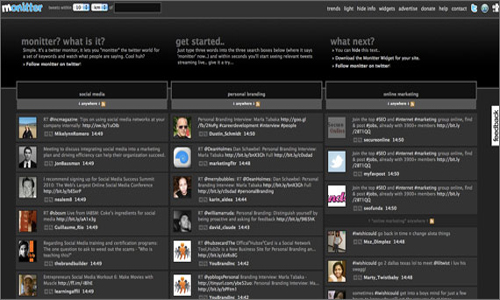
Monitter is one of the Twitter tracking tools reviewed below.
Tips & tools for tracking what’s being said about your nonprofit
Target audience: Nonprofits, NGOs, cause organizations, social enterprises, businesses, brands, bloggers, social media managers, individuals.
This is part of our ongoing series on how organizations can get the most out of Twitter. Please see below for other installments in this series.
By Lindsay Oberst
Socialbrite staff
 People are talking about your nonprofit, especially on Twitter. Research shows that one out of three Twitter users talk about brands in their tweets.
People are talking about your nonprofit, especially on Twitter. Research shows that one out of three Twitter users talk about brands in their tweets.  You don’t have the time to moniter your organization’s Twitter stream all day long, hoping to catch any mentions of your name. Thankfully, it’s easy to keep an eye on your brand. You can save time by setting up the right tools for your Twitter account. Below you’ll find plenty of options for monitoring mentions and tracking keywords so that you can respond to supporters promptly and analyze your results for success.
You don’t have the time to moniter your organization’s Twitter stream all day long, hoping to catch any mentions of your name. Thankfully, it’s easy to keep an eye on your brand. You can save time by setting up the right tools for your Twitter account. Below you’ll find plenty of options for monitoring mentions and tracking keywords so that you can respond to supporters promptly and analyze your results for success.
Twilerts: Twitter alerts via email
1Twilerts is a brand application that enables you to receive regular email alerts of tweets containing your brand, or whatever keyword you want to stay on top of. Think Google Alerts for Twitter. It allows you to track up to 10 queries, using its basic or advanced options, after creating a free account through your Twitter account or through Gmail.
Rating: ★ ★ ★
Platforms: Web-based
PeopleBrowsr & Kred: Social analytics for serious marketers
2PeopleBrowsr is a Web-based search engine for real-time conversations. The possibility to search bios and tweets by authority, location and links are among its Twitter features. But this is only the beginning, as this tool provides you with plenty of more options to keep track of your brand. It will even analyze tweets and classify them as positive or negative and track sentiments overtime. PeopleBrowser also offers full social analytics solutions with the ability to monitor Facebook, blogs and forums. With pricing beginning at $149 per month per seat, this is clearly an option for power users who really want to go deep with their tracking. Interestingly, the company announced last month that it’s offering a new service called Kred as a competitor to Klout.
Rating: ★ ★ ★
Platforms: Web-based
Sideline: Keep on top of key terms
3Sideline is a free monitoring tool from Yahoo! that lets you specify keywords to keep track of via an attractive downloadable app. It runs on Adobe AIR and is open source (though Yahoo! sticks an odd “all rights reserved” notice at the bottom). Sideline has advanced search features, including auto-refreshing of search queries and scanning trending topics. It also offers an Influencers tool to watch what important people are saying about a topic. Watch a four-minute screencast at Vimeo.
Rating: ★ ★
Platforms: Desktop
SocialMention: Social media search & analysis
4SocialMention lets you search keywords on Twitter; however, it also looks for mentions on 100+ social media properties. Place widgets of tracked searches on your website or create daily email alerts for searches. You can only search for one keyword at a time, although you can set up more than one alert. The dashboard, however, goes beyond only searching for your keyword; it also shows you sentiment, top related words, top users and top hashtags.
Rating: ★ ★ ★
Platforms: Web-based
Twitter: Lists and advanced search
5Twitter offers several free tools which can help you keep track of what’s being said of your brand. The ability to create Twitter lists can be hugely helpful if you keep them organized. Third-party apps, such as Hootsuite and Tweetdeck, make viewing lists easier. With the advanced search options, you can monitor negative impressions, questions and tweets by location.
Rating: ★ ★
Platforms: Web-based
Monniter: Live Twitter search
6Monniter is a free real-time Twitter search and monitoring tool. It allows you to narrow your search by geolocation, to set up multiple queries and to see them side by side. Plus, you can pause the monitoring of each column. Saved searches aren’t part of its options since you don’t have to sign up to use it. You can, however, place a keyword-tracking widget on your website.
Rating: ★ ★
Platforms: Web-based
SocialOomph: Boost your social media productivity
7SocialOomph will monitor the tweet stream for you and periodically email you a list of messages containing your specified keywords. You get a limited number of keywords with the free version, but it’s more than most other free tools allow. The professional version costs $27.97 per month. Socialbrite uses SocialOomph to auto-follow new followers — despite its awful interface.
Rating: ★ ★ ★
Platforms: Web-based
SproutSocial: Social media monitoring
8SproutSocial is an elegantly-designed social media dashboard which also allows for keyword tracking. You can aggregate your searches into one data stream to streamline your searches. It also helps you manage Facebook, Twitter, LinkedIn, Foursquare and other networks. The Pro version is $9 a month, while the Business version is $49 a month. Only the Pro version gives you the option to narrow keyword searches by location. They do, however, offer a 50 percent discount for nonprofits. Email [email protected] to request your discount.
Rating: ★ ★ ★
Platforms: Web-based
TweetBeep: Twitter alerts
9Tweetbeep lets you track conversations with hourly updates or daily emails. To use this service, you have to sign up and confirm by email. It will also track mentions of your website, even if tweets use a URL shortening service. You can set up 10 keyword alerts for free or upgrade to the Premium version for $20 a month, and get up to 200 alerts with a 15-minute alert option.
Rating: ★ ★
Platforms: Web-based
TweetAlarm: Keep an eye on Twitter keywords
10TweetAlarm allows you to track as many keywords as you like and gives you notices whenever you want — daily, weekly or as often as they find tweets that match your query. You can also ignore tweets from users of your choice, including from your own account.
Rating: ★ ★
Platforms: Web-based
Top photo via socialmouths.com
In this series on Socialbrite
• 8 nonprofit Twitter superstars
• 12-step guide on how to live-tweet an event
• 24 best practices for nonprofits using Twitter
• 7 top tools to measure performance & influence on Twitter
• Best Twitter dashboards for nonprofits
• 10 great get-down-to-business Twitter apps for nonprofits
 This work is licensed under a Creative Commons Attribution 3.0 Unported.
This work is licensed under a Creative Commons Attribution 3.0 Unported.
The post How to use Twitter to monitor your brand appeared first on Socialbrite.
]]>This is the part of our ongoing series on how organizations can get the most out of Twitter. Please check back weekly for the next installment, and see below for other installments in this series.
The post 10 great get-down-to-business Twitter apps for nonprofits appeared first on Socialbrite.
]]>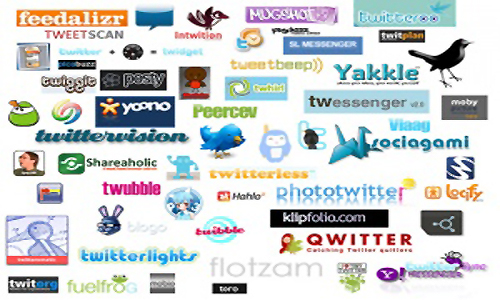
Image courtesy of Nonprofit Tech 2.0
Get results with CoTweet, Twylah, LiveIntent & more
Target audience: Nonprofits, NGOs, cause organizations, social enterprises, businesses, brands, bloggers, social media managers, individuals.
This is the part of our ongoing series on how organizations can get the most out of Twitter. Please check back weekly for the next installment, and see below for other installments in this series.
By Lindsay Oberst
Socialbrite staff
 Twitter has become an increasingly vital tool for businesses and nonprofits of all sizes. Now that you’ve had a chance to get more familiar with the social media platform, build up your following and even
Twitter has become an increasingly vital tool for businesses and nonprofits of all sizes. Now that you’ve had a chance to get more familiar with the social media platform, build up your following and even  measure your level of influence against other organizations, it’s time to get down to the nitty gritty of using Twitter. We’re talking Twitter apps, people. There are hundreds of Twitter apps that exist, and rather than weed through them by trial and error, we’ve compiled a list of 10 apps we recommend to help nonprofits get serious about getting results with social media.
measure your level of influence against other organizations, it’s time to get down to the nitty gritty of using Twitter. We’re talking Twitter apps, people. There are hundreds of Twitter apps that exist, and rather than weed through them by trial and error, we’ve compiled a list of 10 apps we recommend to help nonprofits get serious about getting results with social media.
CoTweet: Proactive marketing solution
1 CoTweet is a powerhouse for Twitter accounts when you have multiple team members tweeting. It allows for scheduling, tracking and adding notes. Nonprofits can manage up to six Twitter accounts for free using the Standard edition. The ability to track past conversations is a great utility to remind you where you stand with each contact. You can also assign specific people to on-duty status. The Enterprise edition costs about $1,500 per month and is worth it for medium to large organizations. With this edition, you can manage campaigns, assign tasks and integrate the tool with third-party apps such as Salesforce.com. On the other hand, the interface is lacking and the analytics could be better. It also allows for Facebook management.
Rating: ★ ★ ★
Platforms: Web-based, iPhone, Android, Blackberry, Windows Mobile
MediaFunnel: The app for team tweeting
2 Media Funnel allows for more of your staff to be involved with the tweeting process. It supports multiple user types — admins, publishers, contributors and guests — and tweets can be placed in a queue for editorial review by a publisher or administrator. Scheduled tweets, brand alerts and tweets via email or SMS are supported. This tool also integrates with Salesforce.com, Zendesk, Twilio and Klout. The free plan allows for two users and no brand monitoring, while the standard plan offers many features and costs $1 per user per month or $1 per social media account, whichever is greater.
Rating: ★ ★ ★
Platforms: Desktop, iPhone, Android, Blackberry
Timely: Make your tweets count
3Timely analyzes your past 199 Twitter updates to determine what times during the day people are most likely to read your posts. You can schedule tweets to go live at those times and can use the bookmarklet to tweet links without leaving your current page. You can tweet right away or add the message to your queue. It’s free.
Rating: ★ ★ ★
Platforms: Web
Klout: Measuring online influence
4 Klout offers a daily summary of your organization’s or team members’ social media influence, with a ranking that factors in your reach and impact on Twitter (metrics such as retweets, follower counts, list memberships, unique mentions), Facebook and LinkedIn. Klout has an open API that’s integrated into many Twitter apps: More than 750 partners use Klout data, including Hootsuite, CoTweet and Attensity 360. For the end user, its analytics platform is rich and easy to use, even if the methodology used in spitting out a Klout Score is a bit opaque.
Rating: ★ ★ ★
Platforms: Web-based, iPhone (Social Score), Android
Twylah: Branded pages for your Twitter account
5Twylah creates one page that sums up your nonprofit brand. This custom page automatically organizes your tweets into topics that you tweet about most often. Users can interact on your page by retweeting and responding to messages. The biggest benefits this tool brings are for SEO. Google no longer indexes tweets, but it does index each Twylah page and the tweets within it, giving your tweets a longer life. It also offers PowerTweets, which creates a separate landing page for your tweets with other recommended messages. It’s good to use this for blog posts, but if you do it too much, you might annoy your followers.
Rating: ★ ★ ★
Platforms: Web
Qwitter: Find out who unfollows you
6Qwitter lets you know when someone stops following you after your last tweet, so you can identify what might have made them unfollow you. This free tool automatically e-mails you when someone unfollows you. If you’re a nonprofit and you tweet about sports and then three people immediately unfollow you, you might want to keep your messages more on topic.
Rating: ★ ★
Platforms: Web
LiveIntent: Cultivate your following
7With its Discovery Window, LiveIntent lets you turn static social media Follow Us buttons into dynamic windows on your site. The start-up says the intent is to grow your following and fans, while improving SEO and driving additional revenues from “sponsored introductions,” which are based on common interests and level of engagement. The window dynamically adjusts recommendations for each user and each page.
Rating: ★ ★
Platforms: Web
Twitpay: Send and receive money via Twitter
8Twitpay is a simple, secure way to enable your supporters to make donations to your cause and to quickly spread the word. It’s free to use use, however, it does charge a percentage of the donations actually paid including a small fee per transaction. They say they have over 45 nonprofit clients including CARE, the National Wildlife Federation and the Children’s Miracle Network.
Rating: ★ ★ ★
Platforms: Web
Optify: Marketing solutions for the real-time web
9Optify is robust business management tool that lets you set up real-time alerts to track specific keywords and provides useful insight into your social media activity. You can create and track Twitter campaigns, and it gives insight into how well visitors from Twitter convert into leads. Optify also offers many other optimization tools to find keywords, improve your website and more. The free edition only allows for one user and tracks five keywords. The basic version costs $99 per month and allows you to track up to 250 keywords. The professional version is $500 per month and allows for 10 users and 2,000 keywords.
Rating: ★ ★ ★
Platforms: Web
JustCoz: Increasing awareness about your causes
10 An online relay system built for charities and nonprofits, JustCoz gives Twitter users the ability to donate a tweet a day to help raise awareness for causes. Once someone signs up, a tweet will automatically be sent from their account once per day with your customized message. This tool can help raise awareness for a campaign, however, all messages go out at once and you only have the option to send the same message to all of your followers.
Rating: ★ ★ ★
Platforms: Web
What other Twitter apps or tools have you found useful for your nonprofit?
In this series on Socialbrite
• 8 nonprofit Twitter superstars
• 12-step guide on how to live-tweet an event
• 24 best practices for nonprofits using Twitter
• 7 top tools to measure performance & influence on Twitter
• Best Twitter dashboards for nonprofits
 This work is licensed under a Creative Commons Attribution 3.0 Unported.
This work is licensed under a Creative Commons Attribution 3.0 Unported.
The post 10 great get-down-to-business Twitter apps for nonprofits appeared first on Socialbrite.
]]>The post Best Twitter dashboards for nonprofits appeared first on Socialbrite.
]]>
Image by Joe Pemberton on Flickr
Choose one of these 7 tools to improve your Twitter workflow
Target audience: Nonprofits, NGOs, cause organizations, social enterprises, businesses, brands, bloggers, social media managers, individuals.
Summary: As Twitter becomes part of your routine — and especially if you manage multiple accounts — it’s easy to feel as if you’re floundering in the incessant flood of information. But a good Twitter dashboard (sometimes called an application or client) gives you access to your accounts in one place and can help you stay afloat by making it easier to monitor, plan and track updates and conversations.
Here we compare our top seven Twitter dashboards, as well as list others that may work best for you and your organization. Compare these to our earlier roundup of Top 10 social media dashboard tools.
This is the part of our ongoing series on how organizations can get the most out of Twitter. Please check back weekly for the next installment. Also see:

• 8 nonprofit Twitter superstars
• 12-step guide on how to live-tweet an event
• 24 best practices for nonprofits using Twitter
• 7 top tools to measure performance & influence on Twitter
By Lindsay Oberst
Socialbrite staff
 Twitter dashboards come in two types: desktop and Web-based. Which one best fits your organization depends on your preferences. While some people prefer to separate their Twitter and Internet experiences, other people find it easier to keep everything within the Web browser.
Twitter dashboards come in two types: desktop and Web-based. Which one best fits your organization depends on your preferences. While some people prefer to separate their Twitter and Internet experiences, other people find it easier to keep everything within the Web browser.
One downside of running a separate desktop client is that it can slow down your computer. However, even though Web-based solutions don’t require updates as do desktop ones, they also occasionally don’t work properly. Many of these clients also work on other platforms, including iPhones, Androids, iPads and others. All of these tools can be a bit daunting at first, so expect to spend some time getting familiar with them.
TweetDeck: An all-in-one desktop dashboard
1TweetDeck allows you to schedule tweets, to follow and unfollow accounts, and to create separate columns to track hashtags, keywords and Twitter lists. It also supports Geo-tagged tweets. You can track links using the url shortener bit.ly, and if you feel limited by 140 characters, a service called deck.ly allows you to tweet longer. The pop-up notifications can be helpful if you need to stay updated on a certain topic or keyword throughout the day. Unfortunately, you can’t filter the pop-ups but you can turn them off. On the negative side, this desktop tool has been known to slow some computers down since it uses Adobe AIR.
Twitter acquired Tweetdeck in May 2011, and although they have not done so yet, and haven’t shown any signs that they will, some people have concerns that Twitter might shut down Tweetdeck to protect itself. For now, this dashboard also simplifies Facebook, Myspace and Foursquare account management. Plus, its Android app gets the best reviews.
Rating: ★ ★ ★ ★
Platforms: Desktop, iPhone, iPad, Android
Hootsuite: Web-based productivity dashboard
2Like TweetDeck, Hootsuite can also schedule tweets, follow and unfollow people, and create separate tabs for monitoring. This intuitive dashboard has several useful features. First, it is designed to make collaborating and organization easy. Second, it offers free analytics, including a built-in url shortener, which tracks your tweeted links. Other useful features include displaying a user’s Klout score, which measures online influence, and a bookmarklet that allows you to tweet about a page without leaving your current tab. It also supports Facebook, LinkedIn, Ping.fm, WordPress.com, MySpace, Foursquare and mixi. Plus, real-time searches can be embedded on your website. On the downside, this client can fall asleep with inactivity, which disrupts any monitored streams.
The free version of this tool provides you with free social analytics, five social profiles and it’s ad-supported. Or you can opt for the $5.99 per month Pro version that allows you to have one team member, plus unlimited social profiles, enhanced analytics, no ads and more. The iPhone app is excellent for tweeting on the go. Hootsuite also continues to improve its service. Three updates announced this month provide geo-analytic technology, deeper integration with LinkedIn and crowd-sourced explanations of trending topics.
Rating: ★ ★ ★ ★
Platforms: Web, iPhone, iPad, Android, BlackBerry and Keitai
Seesmic: Powerful multi-platform tool
5If Tweetdeck and Hootsuite are for power users, Seesmic is for regular folks. The Seesmic Desktop offering is an Adobe Air application that integrates multiple Twitter accounts, Facebook accounts and pages. Seesmic also offers a browser-based client for Twitter that allows you to manage your Twitter stream in a Gmail-like interface; save your Twitter searches synchronized with your Twitter account; and hold threaded conversations in your direct messages (DM’s). Seesmic Desktop allows you to manage several Twitter accounts, build groups, create saved searches and utilize an anti-spam tool. Klout can be integrated into this client using an app; however, you won’t get analytics with this tool, and the Web and desktop versions have different features.
Rating: ★ ★ ★
Platforms: Desktop, Web, iPhone, iPod Touch, Android, Windows Phone 7, Blackberry
Mixero: Improving workflow, reducing noise
6Dubbed a “new generation Twitter client,” Mixero cuts out much of the distracting Twitter noise and allows you to manage multiple accounts without becoming overwhelmed. This desktop client runs on Adobe Air, but users report fewer glitches than similar applications. Many clients attempt to take over your computer and give you little control; however, Mixero gives you detachable, re-sizable columns. And they also have a unique Avatar mode, which allows the program to hide itself except for your ActiveList. The icon cluster stays on top of the desktop and shows when new items are received. This is great for not getting caught up with every little thing everyone is saying.
Its ActiveList allows you to choose a number of sources that are really important for you at the time. You can filter groups and create channels using keywords and user names. MicroChats give you the ability to create a private (or public) chat room and quickly invite your Twitter friends and followers to talk with you in real time. Another useful feature for getting work done is that the app allows you to create two dashboard setups, meaning you can have one for work and one for home. It also works with Facebook.
Rating: ★ ★ ★
Platforms: Desktop, iPhone, Android
Brizzly: A simple, Web-based reader
7Brizzly simplifies your Twitter browsing and allows you to manage up to five accounts for free; however, it does not allow scheduling. One neat thing about this tool is that it helps you keep up with news and trends and explains trending topics in its Brizzly Guide. This way your nonprofit can stay relevant. Also, when you get a direct message (DM,) an IM-like notification pops up which you can view and answer in the pop-up window. Another useful feature is that you can mute a user without unfollowing them. In June 2010, Brizzly launched picnics, a feature that allows you to exchange links, photos and comments with members of your nonprofit and without anyone else seeing them.
Rating: ★ ★
Platforms: Web, iPhone, iPad, Android
Other choices
We haven’t used all of these additional Twitter dashboards and clients — which ones do you think are worth a tryout?
- DestroyTwitter. A super simple desktop dashboard. It leaves an incredibly small footprint.
- EasyChirp. An alternative to the Twitter.com website, the site is designed to be easier to use and optimized for disabled users. Formerly called Accessible Twitter.
- UberSocial: A full-featured app with an excellent iPhone component. Also, available for Android and Blackberry.
- CoTweet: Wed-based social media engagement, management and reporting solution. Offers anayltics, although they are not intuitive.
- TwitterLocal: Good for connecting with local people and businesses.
- Twitterific: A Mac OS X and iOS client.
- Echofon : A minimalist client for Mac, also with a Firefox add-on.
- Pwytter : A free, open source Twitter client for Windows, Mac and Linux.
- Tweetie for Mac: A Twitter app for Mac (desktop and laptop) users. Note: Twitter purchased Tweetie2, an iPhone app, in April 2010.
- Digsby: Digsby combines IM, email and social networks in one app.
- Twinja : A downloadable desktop app built on Adobe AIR for those who prefer a different UI. Works on both Mac and PC.
- TwInbox : TwInbox seamlessly integrates Twitter into Outlook, giving you full Twitter functionality without having to open any other apps.
- Spaz: An open-source Twitter app for Mac OS X, Windows and Linux.
- Tweetr : Twitter client for Mac / PC.
- Twittm : Twitter for desktop.
- Statuzer : Twitter client running through Adobe AIR.
- Chirpr : Windows sidebar gadget for Twitter.
Have a favorite of these Twitter clients? Which ones do you like or dislike? Know of others we missed? Please share in the comments!
Additional Twitter articles on Socialbrite
• Top 10 social media dashboard tools
• 12 great nonprofits & causes to follow on Twitter
• Build a fan base: How to get more followers on Twitter
• Go viral: 13 ways to get your blog posts retweeted
• Twitter tutorials: Twitter Lists, hashtags, Twitter stats & more
 This work is licensed under a Creative Commons Attribution 3.0 Unported.
This work is licensed under a Creative Commons Attribution 3.0 Unported.
The post Best Twitter dashboards for nonprofits appeared first on Socialbrite.
]]>The post 16 tips for making video interviews come alive appeared first on Socialbrite.
]]>
How your nonprofit can capture the best stories on camera
Target audience: Nonprofits, NGOs, cause organizations, social enterprises, brands, educators, video producers, Web publishers, storytellers, individuals.
This is part 2 of a two-part series on video storytelling. Also see part 1:
• How to find amazing, powerful stories for your nonprofit video
By Lindsay Oberst
Socialbrite staff
 Stories are a great tool, which nonprofits too often don’t take advantage of. Whether you’re running a campaign or conveying your organization’s mission by spotlighting the people you help, you should be thinking about how to find stories that move people to action.
Stories are a great tool, which nonprofits too often don’t take advantage of. Whether you’re running a campaign or conveying your organization’s mission by spotlighting the people you help, you should be thinking about how to find stories that move people to action.
Once you uncover those stories, it can be hard to get people to tell them on camera and to get the details needed to make an awesome, powerful story. But by following the suggestions below, you can come away with great visual stories that should resonate with your community. And remember, a photo collage with a voiceover can be just as effective as a traditional video.
The following are tips from people who regularly make videos for social good, including Chris Yates of Huddle Productions, Cara Jones of Storytellers for Good, Tritia Pocci, who has created strategy for marketing media content, and Danielle Bernstein of Clear Films.
1Understand your goal. Think about what you want to accomplish with the video: Enlighten people about a cause? Move them to action? Don’t muddy it up with multiple missions. Have a plan.
2“Research, research, research,” Pocci said. Take the time to be inspired, know your subject and figure out what will work in your video.
— Tritia Pocci
3Keep it really simple. “Start with a simple storyline, get clear about the message you want to communicate and visualize the most concise way to convey this message through an interview beforehand,” Pocci said.
4 Don’t bring notes to the video session. This will help the person on camera feel more at ease and will cut down on distractions. “Subconsciously they’ll think they’re being interviewed and they’ll clam up,” Yates said. So just memorize a few key points that you want to cover. Adds Pocci: “Interviews can take on a life of their own, and sometimes that is where the magic happens.”

5Don’t have the person look directly at the camera if your subject will be sitting down. Place yourself to the left or right and have them look at you. This will help them feel more comfortable as they talk.
6Work with only a two-person crew: a videographer and an interviewer. “I generally start these conversations while the videographer is setting up and just have him or her tap me on the shoulder when the camera is rolling,” Jones said. But remember: You can be your own crew, too, and do a one-on-one interview.
7Use people who want to be on camera. “They are generally the most articulate and comfortable,” Jones said.
8For reluctant storytellers, Jones advises motivating them by providing them with a larger sense of purpose. “They may need to be reminded that by telling their story they can help the nonprofit raise funds or reach out to others in their shoes,” she said.

9Put them at ease — start the interview with a subject they feel comfortable talking about. “Even if it’s totally unrelated to the interview topic, this will help them get used to being on camera,” Jones said.
10Discuss sensitive subjects ahead of time. If you’re dealing with difficult subjects, talk beforehand to the person about what they feel comfortable talking about. “This instills a sense of trust and allows them to be prepared for difficult questions,” Jones said.
11Remind people that you have endless tape. “I always remind people that if they don’t like something they say they can start over again … and again,” Jones said. “If they are getting stuck on something, I find a different way to ask the question to put them more at ease.”
12Shoot some footage of them doing what they love to do. You can shoot them sitting down and talking with you, but you may want to break that up with shots of them doing instead of just talking — say, teaching a workshop, or working in a greenhouse.

13Look for the right chemistry. Sometimes the person with the story is not who you’d expect. Pocci cites the lead singer and lead guitarist from the hair band Poison. One has a sassy, gregarious, carefree personality, the other tends to the pensive, serious side. Which is better suited for your video?
14Spend time with people. Get to know them a bit better before you start in cold on an interview.
15Be confident. Steer the interview in the direction you want it to go. If the discussion meanders, pull it back to achieve what you want to accomplish.
16Show respect for the person telling their story. Be sure to thank them and let them know when it will appear online.
What tips do you have for getting people to tell stories?
Photo credits:
• Image at top by jsawkins
• 2nd Image by newmediaconsortium
• 3rd image by Repoort
• 4th image byDplanet::
Related
• Guide to shooting better online video (Socialbrite)
• 8 tips to help you shoot video like a pro (Socialbrite)
• 4 ways to tell a visual story for your nonprofit (Socialbrite)
• Mash up a visual story for your nonprofit (Socialbrite)
• A quick guide to multimedia software (Socialbrite)
• Complete guide to creating a video project (Socialbrite)
• More resources to help your organization create media (Socialbrite)
 This work is licensed under a Creative Commons Attribution 3.0 Unported.
This work is licensed under a Creative Commons Attribution 3.0 Unported.
The post 16 tips for making video interviews come alive appeared first on Socialbrite.
]]>The post How to find amazing, powerful stories for your nonprofit video appeared first on Socialbrite.
]]>
Strategies for identifying stories that exemplify your organization’s mission
Target audience: Nonprofits, NGOs, cause organizations, social enterprises, brands, educators, video producers, Web publishers, storytellers, individuals.
Part 1 of a two-part series focused on using video to tell compelling stories. Also see part 2:
• 16 tips for making video interviews come alive
By Lindsay Oberst
Socialbrite staff
 All too often, nonprofit organizations fail to take advantage of their greatest asset: stories.
All too often, nonprofit organizations fail to take advantage of their greatest asset: stories.
Stories help us interact with our world and make sense of it. They link us together and shape our view of the world. Nonprofits, however, often miss the stories that surround them; the stories that can help them raise more funding, expand awareness of their cause and reach their goals.
Rob Wu is the creator of CauseVox, a platform to help nonprofits raise funds. He believes that nonprofits are missing a huge opportunity in stories.
“Generally, nonprofits use some level of storytelling but not to the fullest,” Wu said in an email. “The nonprofits that use stories in a meaningful way craft an overarching narrative of their organization and supporting stories that compel their audiences to action. Often, I hear nonprofits talk about fundraising strategies or a communications plan, but seldom do they talk about a storytelling strategy.”
Using stories is something that nonprofits can do in many areas of their work, yet videos are a particularly powerful tool. Especially considering that U.S. Internet viewers watch almost 20 hours of online video per month, according to statistics released in June.
Video storytelling draws us in by appealing to our emotions — a faraway woman with big eyes telling us about the children she can barely feed or the excitable entrepreneur full of passion for his idea. And then if done properly, video stories cause people to take action.
If your nonprofit wants to make use of stories, how can you take a step back and find the right stories that support the causes that matter to you? Here are three steps you can take to discover amazing, powerful stories to use in your own videos:
Be open to telling stories
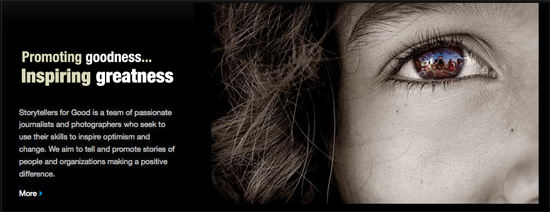
Storytellers for Good
1When stories are part of daily work, people work in a different way. They start asking questions and listening to people more deeply.
Cara Jones founded Storytellers for Good as a platform for telling and promoting stories of people who are making a positive difference. She believes nonprofits should create a storytelling culture in the work place.
“This will have an inspirational impact on all involved,” Jones said by email.
If you want to find stories, you’ve got to weave them into your business model, always seeking them out with a method to collect them.
On the Causevox blog, Jones gives the following tips, which can help nonprofits pay attention to stories:
- Hold a monthly event where you gather your employees to share inspiring stories.
- Create an organizational story bank to record these stories.
Danielle Bernstein created Clear Films, an independent production company dedicated to social change. She also encourages the nonprofits she works with to think about the stories that surround their missions.
She carries a camera with her most of the time. With the rise of easy, handy video cameras, it’s possible for all nonprofits to equip someone on their team with a video camera.
Another thing you can do is to stimulate your creativity by watching other great videos. (Here are eight great examples of nonprofit video storytelling.)
When your nonprofit opens itself to stories, it welcomes great work even with limited resources. But you have to find the right stories that people can relate to.
Look for a story people can identify with
2As you begin to see stories around you, you’ll notice how our stories all contain common threads. Keep yourself aware of the stories that appeal to your personal emotions in some way. These stories are often can be used by nonprofits to make a difference.
“The stories that rise to the top for video purposes will be emotionally compelling,” Jones said.
“Without emotion, without that feeling, people just don’t get inspired,” Chris Yates said in a phone interview. He created Huddle Productions, which combines social media and video.
Sparking inspiration with your videos is important. However, the best videos — the ones that inspire people to act — go further and create a feeling of hope. Tragedy and transformation are key components that work well in nonprofit videos. Both of these can inspire hope when the story has a positive aspect to it.
Bernstein talked about the importance of uplifting stories. If people are going to take action after watching a video story, they need to believe that change is possible.
Pinpointing individuals is also critical. “It’s about trusting when you connect with people,” Bernstein said. “There’s always something even with different cultures.”
The charity:water campaign for clean water in Haiti.
charity: water is a wonderful example of a nonprofit using specific stories to support their efforts to bring clean water to people in developing nations. They have a section on their blog devoted to individual stories “from the field” and “from the office.” Also, they highlight stories in their videos. For example, their water campaign for Haiti uses the story of one of their workers to frame the need for help in Haiti.
As Yates said, “You’ve got to make it personal. Nobody really feels sympathy for a brand.”
Be patient and the stories will surface
3The best stories aren’t always the ones that jump out at you. Sometimes the real stories are the ones you only notice after interacting with people several times.
“It’s about taking the time to be where you need to be,” Bernstein said. “And then spending the time you need to spend.”
Yates doesn’t believe in forcing the story. He doesn’t go into an interview with specific questions. Instead, he allows the story to surface from the conversation.
“The best stories are the answers,” he said. “It’s not my story, it’s their story.”
Humans have always communicated using stories. Some stories are hundreds of years old and are still used to teach and inform people today.
How is your nonprofit organization incorporating stories into its strategy? Have you used stories in your video campaigns? Tell us in the comments below!
Coming in Part 2: Tips for getting people to tell stories on camera
PHOTO AT TOP BY Rae Allen
Related
• Use video to get to heart of your organization’s story: An interview with Cara Jones (Socialbrite)
• 8 great examples of nonprofit storytelling (Socialbrite)
• How nonprofits should be using visual storytelling (Socialbrite)
• Articles on how nonprofits can create media (Socialbrite)
 This work is licensed under a Creative Commons Attribution 3.0 Unported.
This work is licensed under a Creative Commons Attribution 3.0 Unported.
The post How to find amazing, powerful stories for your nonprofit video appeared first on Socialbrite.
]]>











